In this blog post, I’ll talk about the best infrared heat lamp for muscle pain. I argue that for the best method of countering muscle pain, you not only need a local treatment but also a systemic treatment. In other words, if you’ve got a painful shoulder, it’s best to not only treat that shoulder with infrared but your entire body.
For that reason, I consider either a full-spectrum sauna or a far infrared sauna with a Clearlight® Light Therapy Tower your best option. But first I’ll dig into the scienc of msucle pain and that of infrared heat (lamps). At the end of this blog post, I’ll explain why the products I recommend are the best for the task.
Let’s begin with the science of muscle pain:
Muscle Pain Science
Many different types of muscle pain exist (1; 2; 3; 4; 5). There’s general muscle pain, musculo-skeletal pain, soreness, cramps, referred pain, and a few others. All of these types of pain originate from different reasons.
For instance, two days after a hard workout, you might have what is called “Delayed Onset Muscle Soreness” in a muscle. Or, after working on your home during the summertime, you might overload the tendons of your shoulders - called “musculoskeletal pain”. Alternatively, you might have a neck injury and the nerves around the spine will give you referred pain in your shoulder.
Overall, there’s no “universal” thing called “muscle pain”. Pain in muscles can have many different causes. Those causes, in turn, determine what the best course of action is. For general muscle pain a massage, light movement, and exposure to infrared heat will be wonderful. For other types of pain, these strategies won’t necessarily help much.
However, as it will turn out in a next section, infrared heat has a positive effect on a wide array of different types of pain. I’ll explore these domains soon. And, such solutions are extremely helpful.
Why?
Muscle pain isn’t rare - almost 50% of the general population has muscle pain. Sure, you might simply have tight shoulders and a tight neck from sitting too much, or, you might already have chronic lower back pain that has lasted for years. In many of these cases - but not all - infrared heat will help.
One downside is that not all muscle pain is automatically cured. In 40% of the cases, there are long-lasting problems requiring medical consultation. At any given moment, that means 40% of 50% of the population - a whopping one in five people you meet - have chronic muscle pain. And, pain is not just very uncomfortable, it also leads to missed working days, not being able to perform, and reduced quality of life.
And sure, you can take pharmaceuticals to counter the pain - but these rarely are a long-term solution. Or you could visit a physical therapist but many people don’t want to spend too much money on a therapist to counter pain.
For that reason, infrared heat is a wonderful alternative that I’ll explore next. Infrared can help you counter pain without having any side effects like many pharmaceutical medicines have. But before explaining the effects of infrared heat on pain though, I’ll first distinguish between different types of infared:
Infrared Basics: Near Infrared, Middle Infrared, Far Infrared
From a physics perspective, three different types of infrared exist: near, middle, and far infrared. Explaining the difference between these types of infrared is important because it helps you better understand my choice for the best infrared heat lamp for muscle pain UK that I’ll later recommend.
Here’s the reason why:
Ideally you’ll want to be exposed to all three types of infrared heat because all of them have different benefits for pain. So, if you’re merely opting for a far infrared sauna, or an infrared heat lamp that uses near infrared, you’re not getting the maximum benefits.
But let’s take a step back and explain what infrared light fundamentally is:
“Infrared radiation”, also called “infrared light” and “infrared heat” is part of the electromagnetic spectrum in physics (6; 7; 8). Infrared light is all around you though, and closely related to heat (9; 10). So, if your body is hot it’s expelling infrared heat. And, the night vision cameras can detect you at night is because your body is emitting infrared heat as well.
As stated before, different types of infrared light exist: near, middle, and far. Many different studies have been carried out on these infrared types. I’ve written blog posts about these different infrared types before, such as on far infrared saunas and on infrared light therapy at home.
Most of the infrared light spectrum is heating. That means that when this infrared light hits your skin, it will warm up your tissues. The infrared light also interacts with your cells by increasing the water temperature and affecting energy production at the cellular level (11; 12; 13; 14; 15; 16; 17).
And in an infrared sauna, you’re exposed to lots of infrared heat. Normally, you’re exposed to far infrared but many infrared saunas can be upgraded to be full-spectrum so that middle and near infrared are also included. Another way to include near infrared light into a far infrared sauna is by adding a Clearlight® Light Therapy Tower. As of this time, we’re the only infrared sauna company offering that near infrared light therapy inside sauans.
And, as a result of the infrared heat exposure, you’ll start sweating and your blood flow will change. Many other biological processes are affected as well, such as pain. In the next section, I’ll therefore explore a few studies focusing on infrared saunas and pain - specifically zooming in on different infrared types:


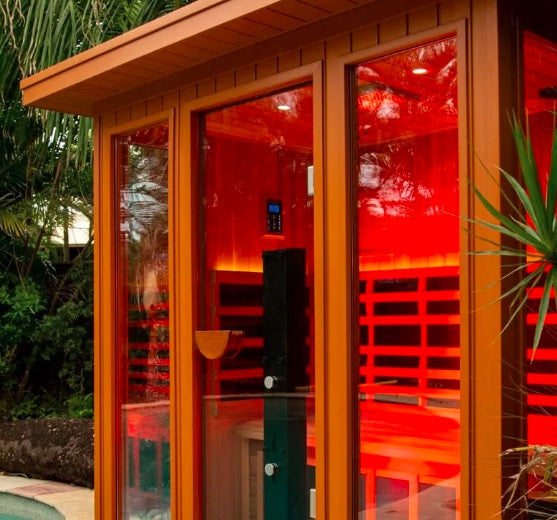


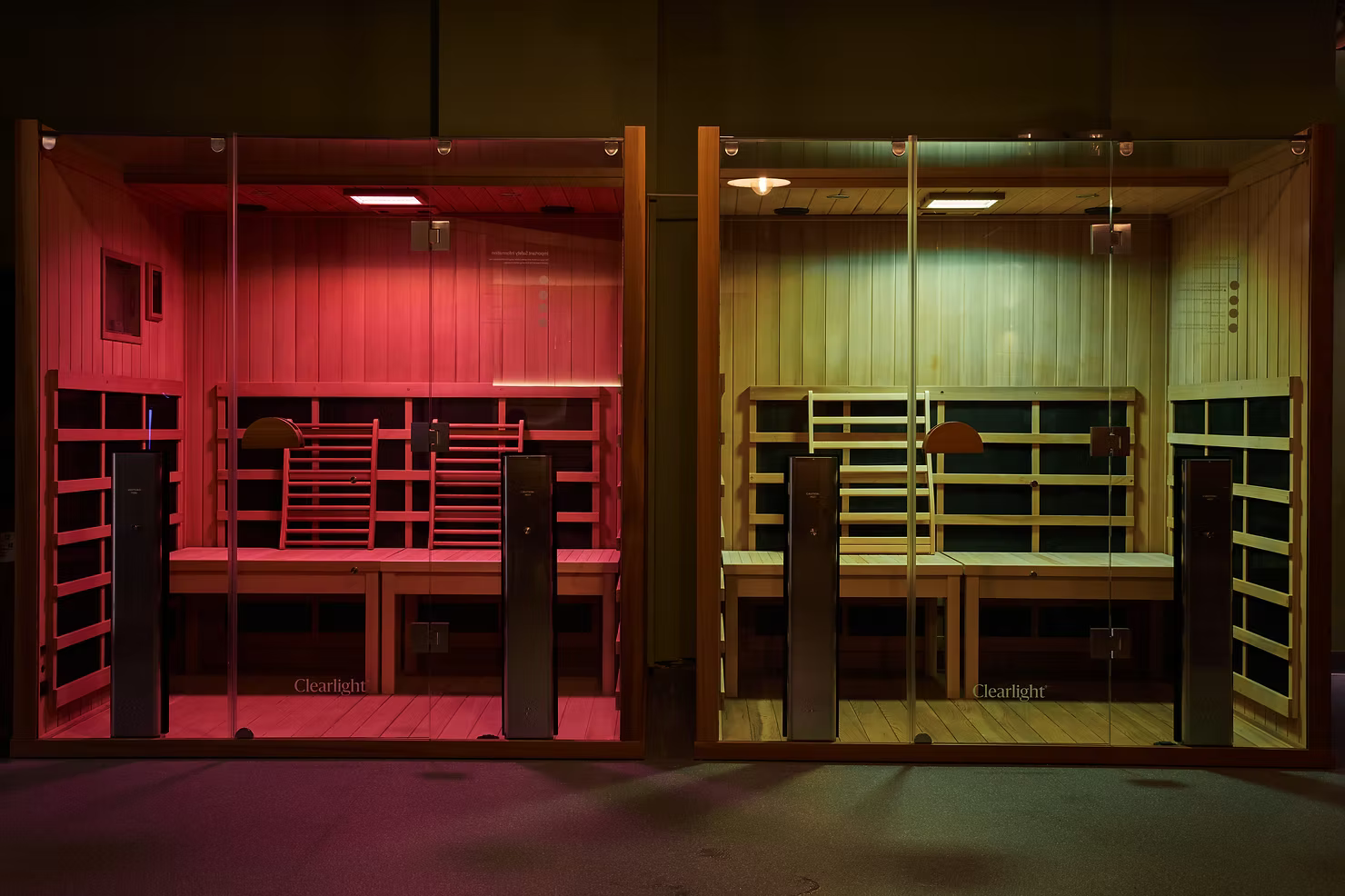
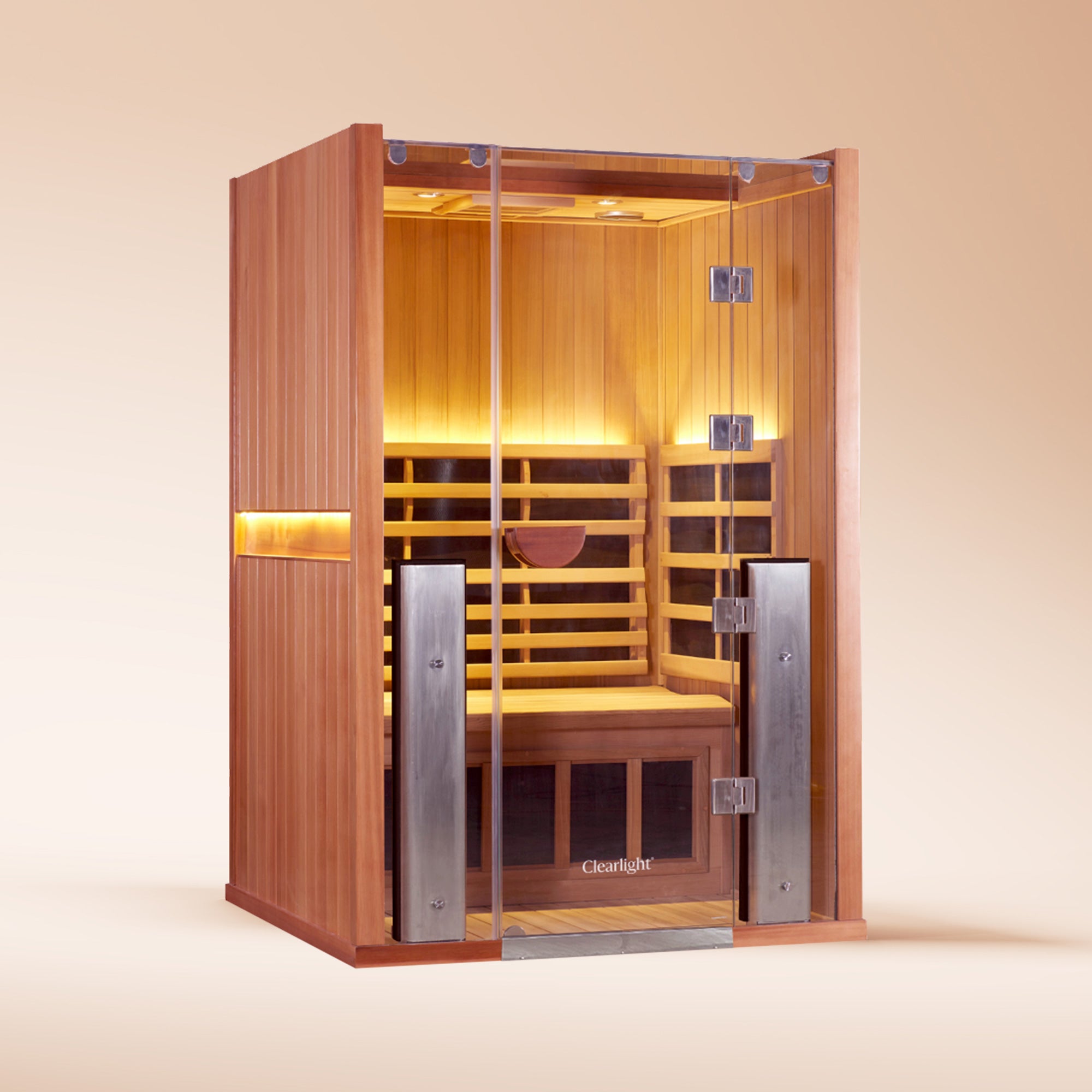

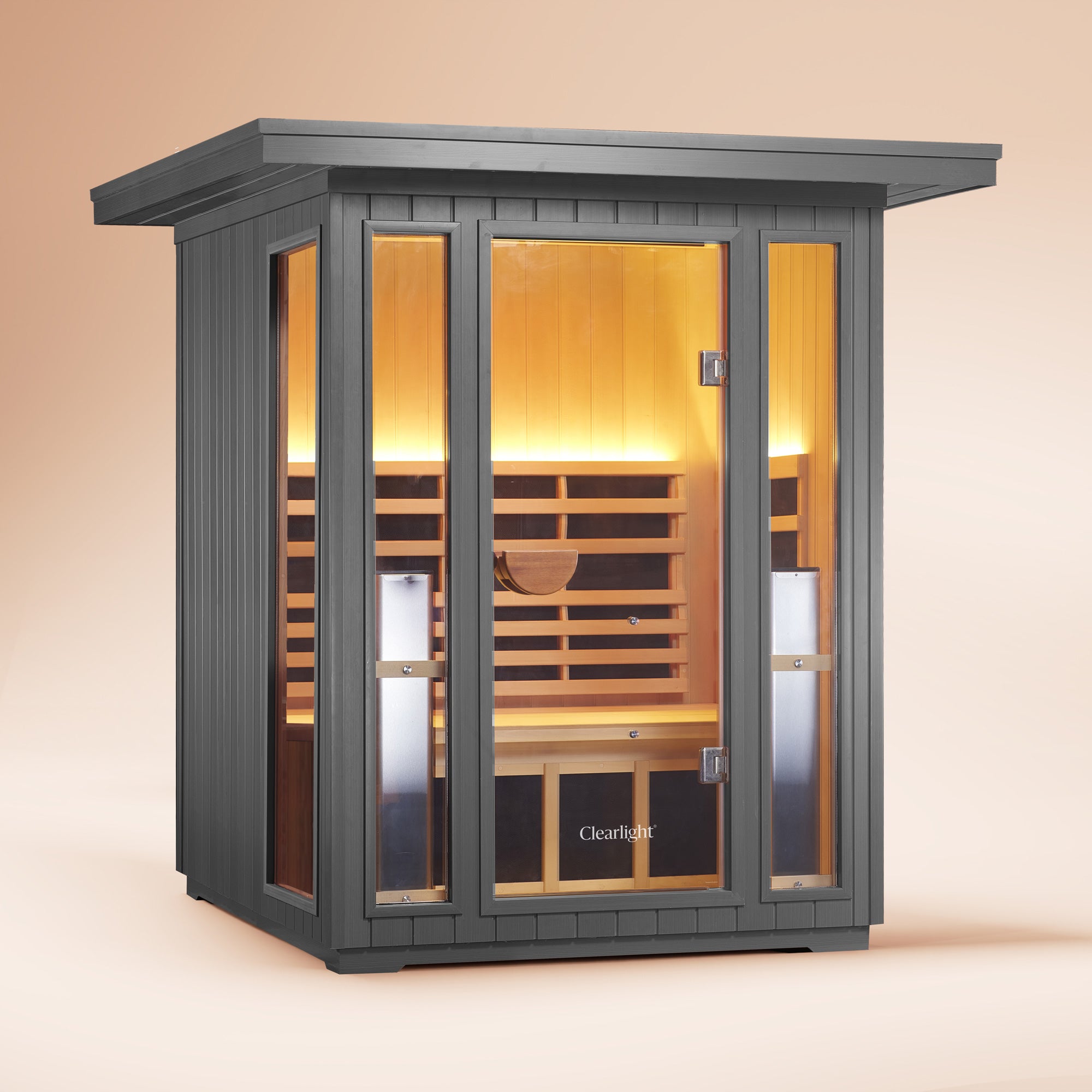

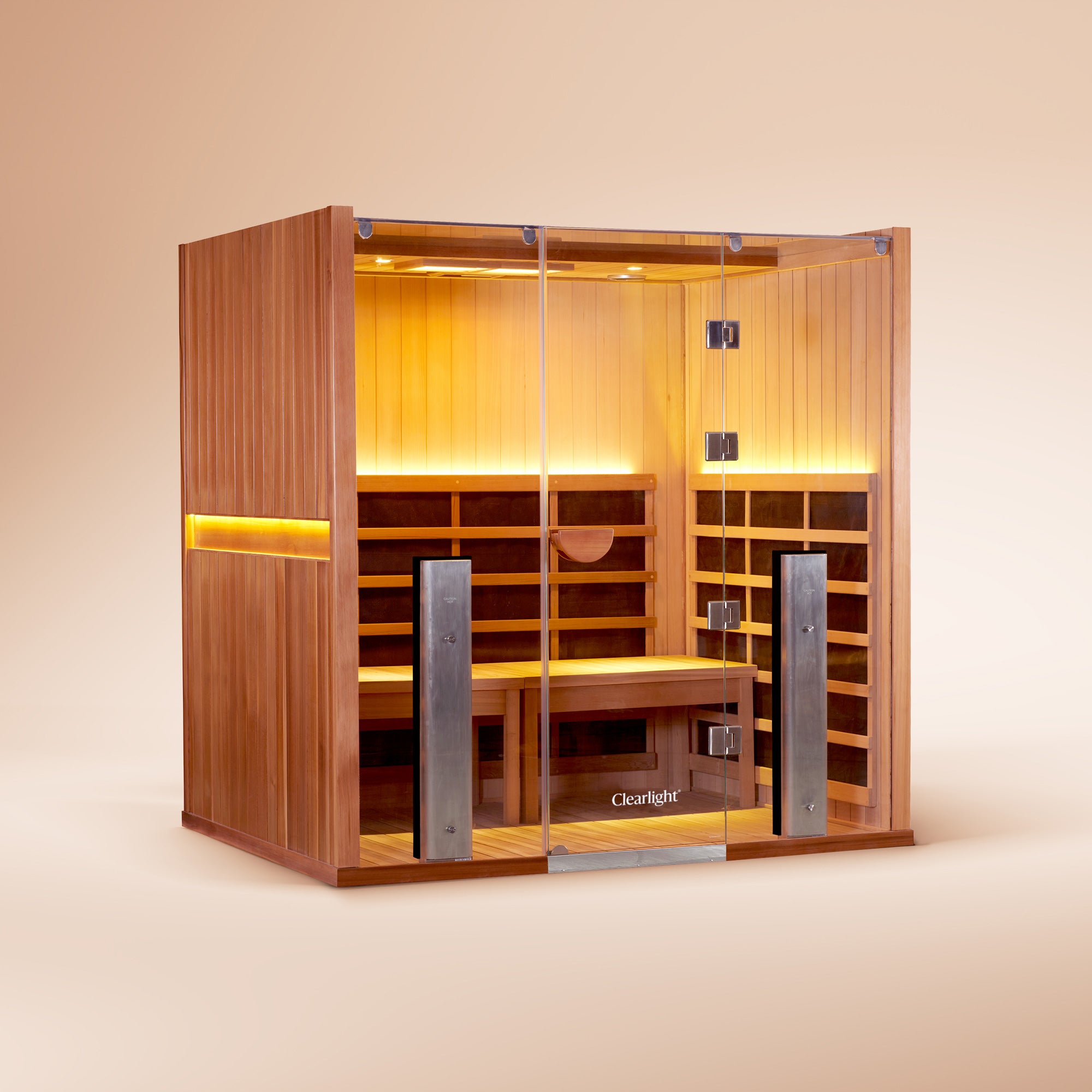
The Best Infrared Light Therapy Device UK Options
Detoxification 101